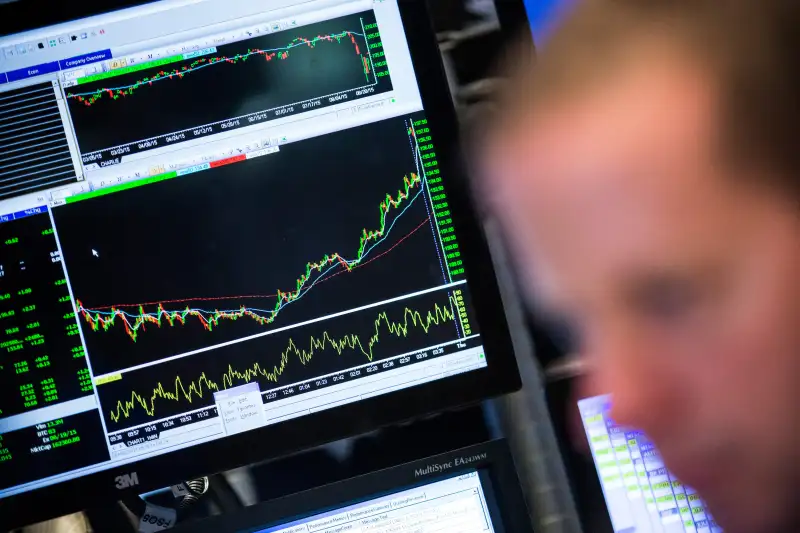Millennials in Target Date Funds Got Hit Hardest by Stock Selloff
Money is not a client of any investment adviser featured on this page. The information provided on this page is for educational purposes only and is not intended as investment advice. Money does not offer advisory services.

As the stock market has whipsawed over the past two weeks, young workers who have all their retirement funds tied up in long-range target-date funds may have been the hardest hit.
The average 25-year-old fully invested in a 2060 target-date fund series saw a 10% decline in account value from the market's recent peak on July 17 through Monday's close, according to Morningstar - close to the 10.96% decline of the S&P 500 over that period.
Meanwhile, the average 65-year-old set to retire this year and invested in a 2015 TDF series saw just a 5% decline.
Even if stocks continue to rebound in the days ahead, the experience of watching value shrink may be an eye-opener to new investors who might not have thought about their risk tolerance before.
Target-date funds are designed to adjust an investor's risk as retirement age approaches, through what is called a glide path. The farther out the fund's end date, the higher the stock allocation. Investors in 2060 funds have equity exposure ranging from 83% to 94%, says Janet Yang, director of multi-asset-class manager research at Morningstar. In the 2015 funds, aimed at workers who will be retiring very soon, average equity exposure is just 42%.
The popularity of these funds in retirement plans is surging. Vanguard reports that 88% of the 401(k) plans it serves offered TDFs last year, up 17% from 2009. Four out of 10 plan participants are wholly invested in a single TDF, Vanguard says, and 64% of participants use them to some extent.
Many young workers are now automatically enrolled in 401(k) plans and put into a default allocation that typically is a target-date fund.
On the plus side, especially for young and inexperienced investors, these funds seem to have handcuffed the worst investor behaviors, like frequent trading. Asset-weighted average investor returns in TDFs are 1.1 percentage points higher than the funds' average total returns, according to a Morningstar study published earlier this year.
"Sometimes, ignoring your investments can be a good thing. You're less likely to pull your money out after it loses 10%, and then you're still invested when the rebound comes," Yang says.
But how will younger auto-piloted investors - now experiencing their first wild market swings - handle the volatility?
"We're defaulting millennials 90% into stocks without ever finding out what their tolerance for risk might be," says Michael Kitces, founder of the XY Planning Network, a network of fee-only advisers specializing in serving Gen X and Gen Y clients. (Kitces also is a partner and director of research for Maryland-based Pinnacle Advisory Group, a wealth management firm).
Kitces worries that the current volatility will lead to adverse outcomes for young investors. "We're taking people who don't need to be that aggressive and given them more risk than they can tolerate. What we're going to do is turn them into lifelong bond investors - and that will cause them problems 30 years from now," he says.
There has been plenty of selling out of target-date funds this week. Aon Hewitt, which administers more than 500 defined-contribution plans covering more than 5.7 million workers in the United States, reports that trading activity on Monday was seven times the normal level, and it was one of the highest trading days on record. 30% of Monday's selling came from TDFs - equal to the share that came out of large U.S. equity funds.
"That tells us that people are looking at TDFs the same as any other investment," says Rob Austin, Aon Hewitt's director of retirement research.
More Options
Default investor options for 401(k) plans, which are regulated by the U.S. Department of Labor under the Employee Retirement Income Security Act, are not limited to target date funds. The Labor Department also allows balanced funds and managed funds, which give workers professional one-on-one portfolio guidance.
Managed accounts also give workers a human being to talk with when things get scary - but just 3% of plan sponsors pick managed account services as a default option, according to a Towers Watson survey.
"When the market gets volatile, you don't have someone to talk to if you're in a TDF," says Wei-Yin Hu, vice president of financial research at Financial Engines, one of the leading firms providing managed account services. "You can't call your TDF and ask if your allocation is still right for you, or what you should do now that you've lost 10% in a downturn."
Kitces urges target-date investors to assess their comfort with risk by taking a well-designed risk questionnaire like the one offered for $45 by Finametrica. If you are not comfortable with the level of risk in your TDF, consider shifting to a closer-date target series with less equity exposure.
"It's not too late for young people to dial down their exposure to a level they can tolerate," he says. "Make a change when things are down 10% instead of 40%. Things can get worse, and then you'll make really non-rational, emotional decisions."